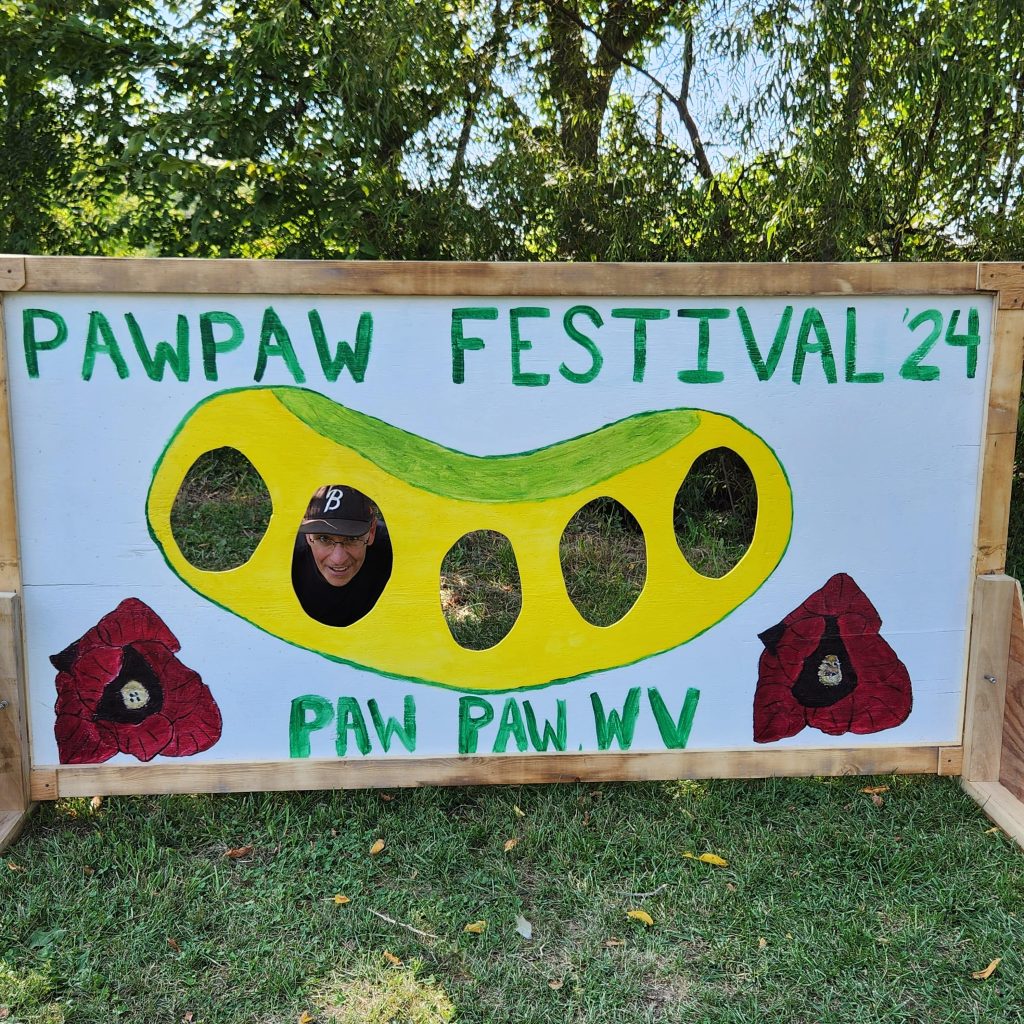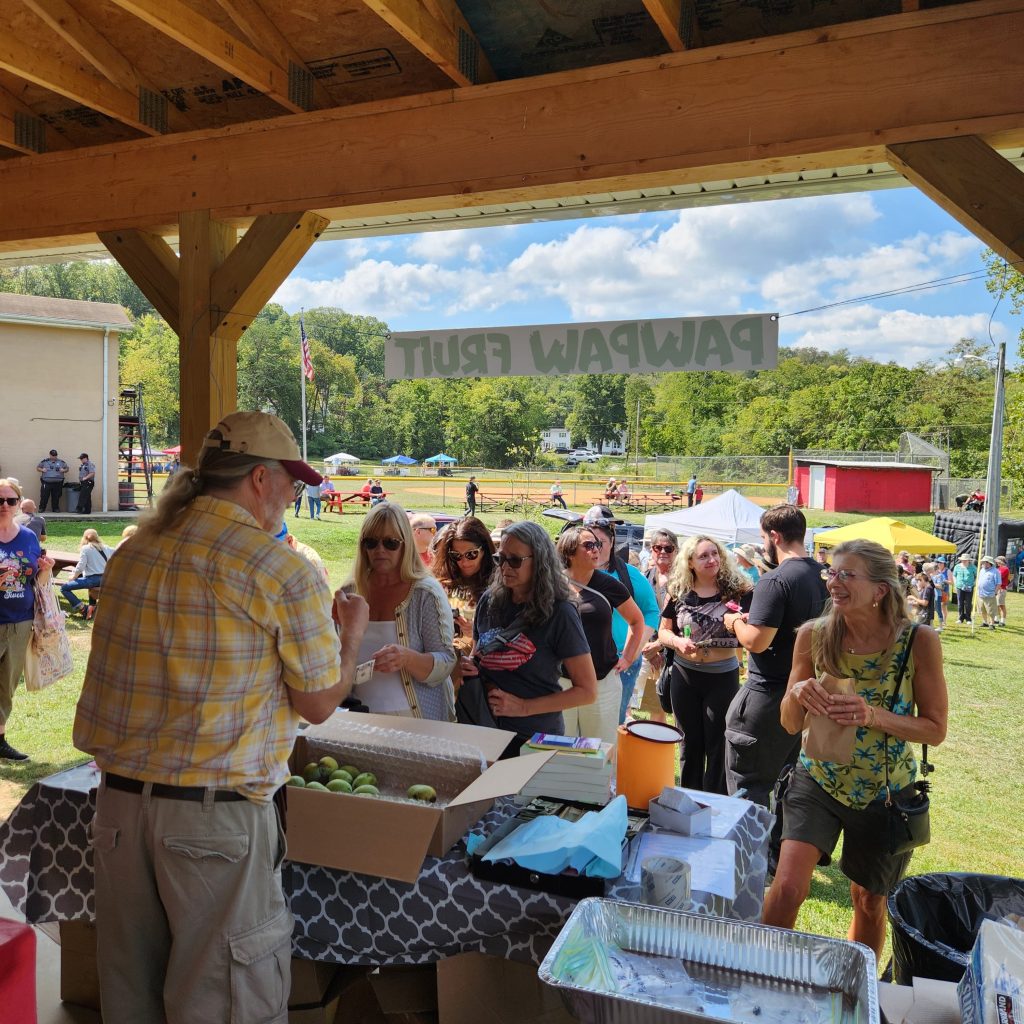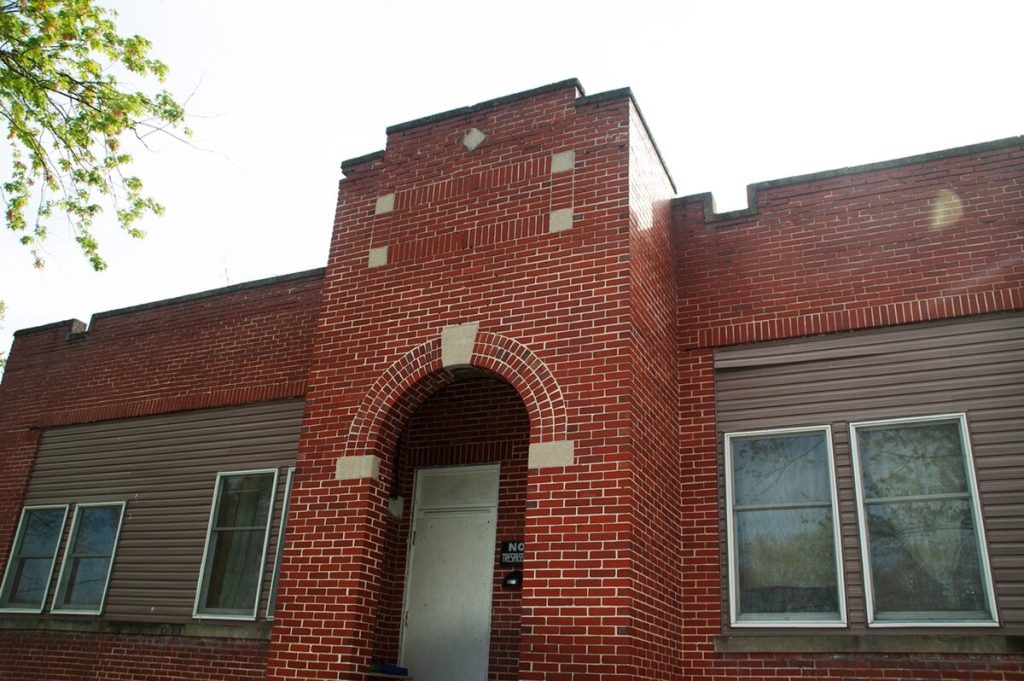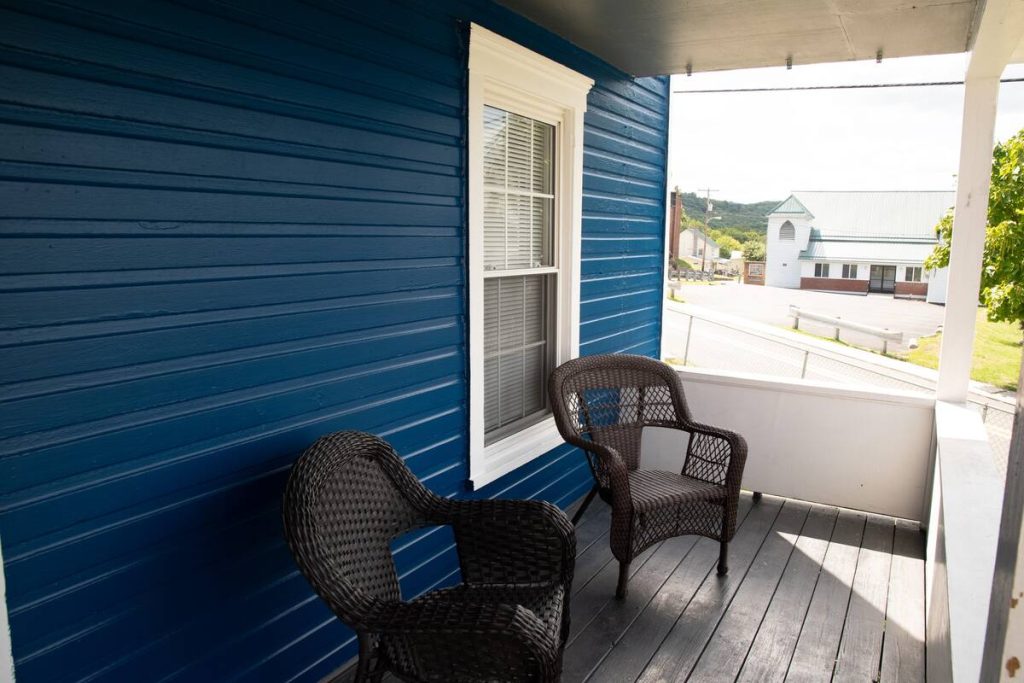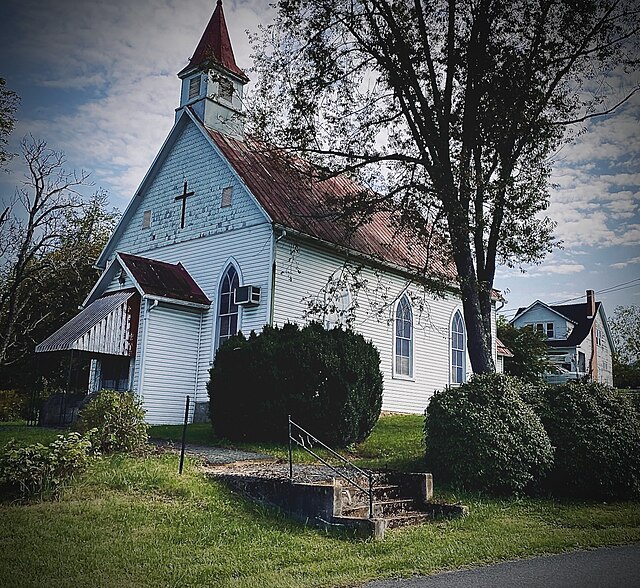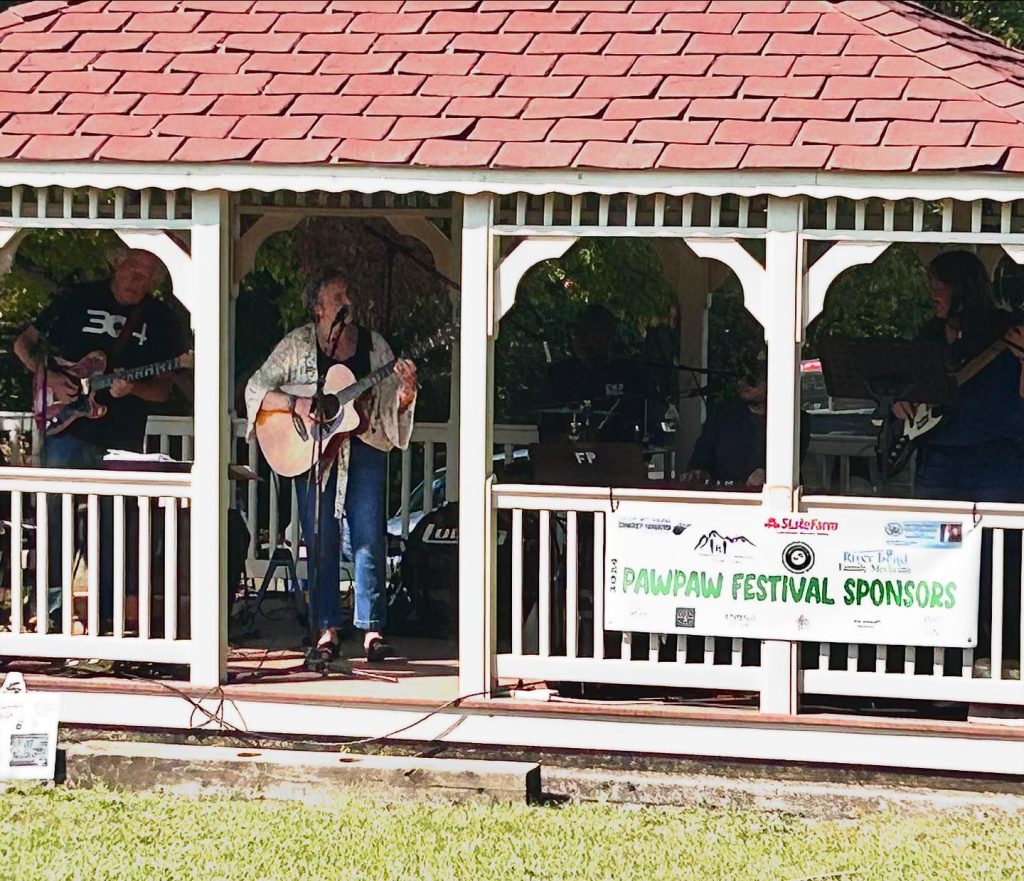The first annual Paw Paw festival was held yesterday in Paw Paw, West Virginia and it was a smashing success.
On a beautiful autumn day, the parking lot was full, the kids were bouncing in the bouncy houses, Todd McCree and Neal Peterson were giving lectures on the tasty Pawpaw fruit, and the down home music was playing from the stage.
The music was exceptional – featuring local favorites Ben Townsend, the Paw Paw Community Choir, Mary Hott and the Carpenter Ants, and the Critton Hollow String band.
When we arrived, we were treated to a historic walking tour of Paw Paw by David Abruzzi, who is researching and documenting what he calls Paw Paw’s “built history.”
Abruzzi knows a lot about Paw Paw and Morgan County.
For all of you Magnolia experts out there, answer this — was the town named after the flower? No, Abruzzi says.
“The name Magnolia, as passed down from oral tradition, was a combination of Timothy Norton’s two daughters Maggie and Nora,” Abruzzi told Morgan County USA. “The addition of the names yielded Magnora and was modified to Magnolia. Timothy Norton was an early resident of the town and worked for the railroad. It is believed that the hamlet came into being because of the Baltimore and Ohio Railroad. The railroad opened a line from Washington, D.C. to Cumberland, Maryland following the Potomac River in 1842. There were many servicing facilities along the right-of-way for steam engines. One of these facilities was Water Station Number 12 which later became Magnolia.”
Through his company Cacapon Preservation Solutions, Abruzzi is seeking to include Paw Paw’s most important historic buildings on the National Register of Historic Places. Those buildings include the Mayor’s office and lock-up, the Saint Charles Catholic Mission Church, the Senator PE Nixon House, Paw Paw’s Black School, the Orchard Facilities and the Paw Paw B&O Train Depot.
Abruzzi, a retired veteran, registered architect, and historian is also personally invested in preserving Paw Paw’s built history through the purchase of several historical properties in Paw Paw.
Last summer Abruzzi purchased three properties in the center of town: the 1876 former Catholic Mission Church, the 1898 Dr. B.W. McBee farmhouse-style house, and a 1930’s-era Craftsman bungalow.
“The intent is to renovate each of the properties to be sympathetic to their historic characters, while making needed updates to take full advantage of modern efficiencies and technologies,” Abruzzi said. “Work is complete on renovating the farmhouse, known colloquially as an “I-House,” into an Airbnb.
Abruzzi worked closely with local Paw Paw business owners Debbie and Eddie Gilberto, and Rebecca Heath on the building’s conversion into Mountain Life Inn.
The newly opened and totally renovated Airbnb features four locally-themed guest rooms, each with their own private bath, secure bike storage, and guest laundry.
The building is painted a rich shade of blue in homage to the Blue Hall that stood on Amelia Street in Paw Paw for many years. The Blue Hall was an African-American music club/juke joint that was already in existence in the early 1900’s.
Since completing work on the Airbnb, Abruzzi has turned his attention to completing the renovation of the 1930’s 3-bedroom bungalow, which he plans to rent out as a vacation rental.
The final piece will be the restoration and conversion of the church into a restaurant.
With its listing on the National Register of Historic Places, the church is eligible for 45% historic tax credits. This West Virginia program will help cover the costs of the necessary preservation and restoration work.
In addition to the restoration work, Abruzzi will construct a small addition for the kitchen to keep the 1,000 square foot church as original as possible.
Once the work is complete the church will become the new home of Mountain Life Kitchen with an Italian themed menu.
Mountain Life Kitchen is owned by Debbie Gilberto, a culinary and international pastry chef who moved to Paw Paw in 2018 with her family.
Working closely with her is fourth generation Paw Paw resident Rebecca Heath and together they will be putting out breakfast, lunch, and dinner along with desserts and sweet treats.
Over the last twelve months, Abruzzi has been successful in getting three historic buildings in Paw Paw listed on the National Register of Historic Places.
These are the 1893 Old Mayor’s Office and Lockup, the 1876 St Charles Catholic Mission Church, and most recently Paw Paw’s 1928 two room Black School.
Abruzzi will be presenting a fourth nomination for the 1910 P.E. Nixon House to the West Virginia Archives and History Commission on September 27, seeking their endorsement.
If they endorse the nomination it will be forwarded to the National Park Service for their final approval. The National Park Service has 45 days to act on the nomination so, barring any unforeseen questions, the Town of Paw Paw will have four individual buildings listed on the national register by early November.
Of the more than one and a half million properties on the National Register less than seven percent are listed individually.
After conducting research, interviewing long-term residents of the town, and working with town officials, Abruzzi spent hours of his time developing the individual nominations for each building to highlight their historic roles in the civic and public life of Paw Paw.
Listed properties and places are deemed “worthy of historic preservation” and become eligible to apply for a variety of grants and tax credits.
Abruzzi also was awarded a contract by the Paw Paw Town Council to research and evaluate four buildings associated with Paw Paw’s Apple Orchard Industry to determine if enough historic integrity remains to justify individual nominations to the National Register of Historic Places.
The West Virginia State Historic Preservation Office recently issued a Determination of Eligibility stating two of the buildings – the 1940 Consolidated Orchard Packing Plant and the 1942 Consolidated Distributors HQ Building (currently the Paw Paw Town Hall) – are eligible for listing.

